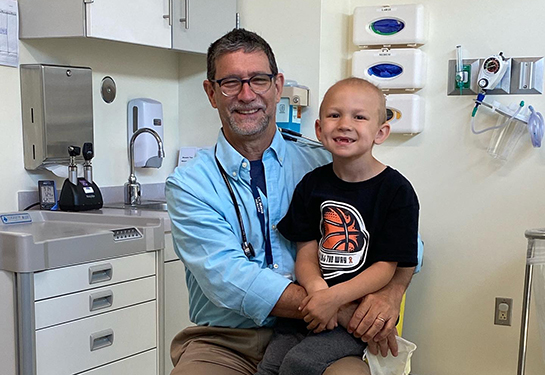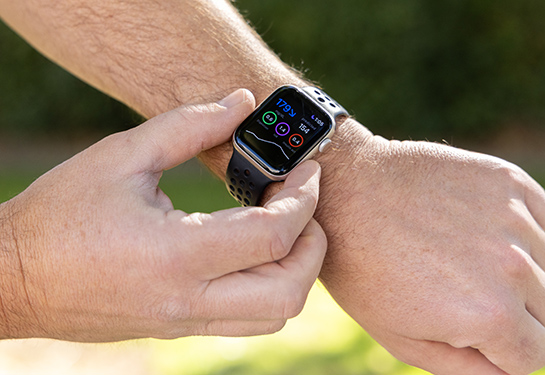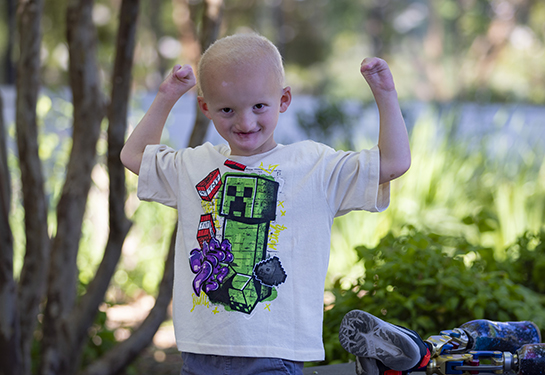New research seeks to reduce birth injury causing shoulder, arm and hand paralysis
Team hopes to identify risk factors for brachial plexus birth injury
A team of UC Davis Health scientists is working to identify factors that could predict brachial plexus birth injury (BPBI), the leading cause of infants’ upper extremity paralysis. They are developing a predictive risk model of maternal and hospital factors associated with the condition. Their work seeks to inform better prevention strategies and shift the current standard practices for this condition.

What is brachial plexus birth injury?
BPBI is a lifelong condition affecting the nerves responsible for muscle control and sensation in the shoulder, arm, forearm, hand and fingers. It is the most common birth injury, occurring in 1 to 3 per 1,000 births.
Infants who sustain mild nerve injuries may recover, but around 30% of infants with BPBI suffer more severe injuries and permanent neurologic damage. They may develop upper extremity limitations that can impact their education, self-esteem and relationships.
Infants with this condition often undergo brachial plexus nerve surgery at 3-6 months of age. While there may be improvements, the surgery does not fully restore the nerve function nor prevent the musculoskeletal consequences of BPBI. The infants may need additional surgeries and physical therapy to improve movement. So, prevention remains the best option.
Identifying populations at highest risk of brachial plexus birth injury
Currently, there are no reliable prenatal predictors of brachial plexus injury. Without a comprehensive, generalizable risk prediction model, it is hard to identify who is at the greatest risk of having a child with BPBI.
“If we can identify women at greatest risk of delivering an infant with BPBI and determine hospital characteristics linked to increased risk of BPBI, then we might be able to develop intervention strategies and prevention efforts to reduce these risks,” said Mary Claire Manske, a pediatric orthopedic surgeon at UC Davis Health and director of the Brachial Plexus Birth Injury Center.
Manske is leading a team of researchers studying maternal and infant data for more than 11 million births in California hospitals from 1991-2012. This data contains the mothers’ demographic, social, economic, geographic and health information for nine months before and 12 months after delivery and their infants’ demographic, social and health data from birth through the first year of life. It also includes factors associated with BPBI and obstetric complications.
“Evaluating these multiple maternal and hospital factors will allow for a more comprehensive understanding of BPBI and its risks,” Manske said. “We will evaluate the association of maternal factors, prenatal care utilization and hospital characteristics with BPBI.”
Insights from Manske’s study could shape prevention strategies and allow hospitals to implement quality improvement initiatives to decrease BPBI risk. They may also help health care providers counsel women more accurately regarding their risk and address modifiable risk factors.
“Our study might facilitate public health initiatives to address disparities in BPBI risk and support prevention efforts,” Manske said. “The broader impact of this work is better collaborations among the different providers involved in this multidisciplinary condition.”
It takes a team of experts from pediatrics, obstetrics, psychiatry, neuro- and orthopedic- surgery and public health to work with families with infants born with brachial plexus. These families need expert counseling and care.
“At the time of diagnosis, it is hard for these parents to see beyond the condition and how their kids will thrive. We try to comfort them and relieve their anxiety as they come to understand the treatment options,” Manske said.
Manske’s research is funded by a grant from the U.S. Department of Health and Human Service. She recently finished her Masters of Advanced Study in Clinical Research, part of the Mentored Clinical Research Training Program (MCRTP) at UC Davis Clinical and Translational Science Center (CTSC).



